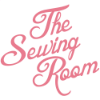Lets's think about this for a minute (or maybe 10). Do you know how your clothing gets made? This is a subject we explore in Sewing Class as often as I can without being too preachy. It often occurs to students after they've sewn a few things for themselves, that the process is not really that easy and that it can take a long time. When the subject is broached about their own clothing, they tell me it's made in a factory and that machines make their clothes. They are often astonished that those very machines are operated by humans, just like themselves. WOW! that's an eye opener.
With the industrial revolution, came the onset of faster fashion. Clothing didn't have to be painstakingly stitched at home by hand or by someone else, in Couture House. It could be bought off the rack and taken home, just like that. While this WAS a revolutionary idea at the time, it morphed over time into what we know now as Mass Consumerism and Fast Fashion. We buy our clothes at name brand stores paying mere dollars for a t-shirt that was made by hand by someone else in another country, for maybe, pennies. There are all sorts of environment, social and economical ramifications of this evolution in the way our clothes get made. I won't bang on about too much in this regard, but I do want our students to begin thinking about these things while they make their own clothing. To value the process and to think more about what we/they can do to change this, while nurturing their creativity.
Some things you can do to offset the cost of Mass Consumerism in your own wardrobe:
Learn how to mend your clothes creatively - there are lots of amazing ideas for creative mending on Pinterest
Buy Local and Hand Made - while this can be more expensive, you might find the pieces are more "special" and take on a different meaning, lasting longer and giving your more joy.
Wash your clothing less - they will last longer - Clothing doesn't need to be washed after each wearing. Consider wearing and ironing your clothing for 2-5 times before washing. (This does not apply to underwear, leotards and activewear which should be washed after being used once). There are lots of ways tohelp the environment when it comes to washing your clothes. I'm just learning about this so more on that at another time; but please let me know if you've found ways to be more environmental with your cleaning products.
Make your own clothing from Vintage or Upcycled Fabrics
Shop at the thrift store - double benefit here as most thrift stores are run by charities
Shop less and THINK more - ask yourself questions about what your buying before you buy it. Do I really need that? Will it bring me joy? Will it last a long time?
I would also LOVE to know your thoughts on Responsible Fashion. Please comment below.
Until Next Time, Happy Sewing!
xo
Jennifer


